Fire in the sky: Chasing the annular solar eclipse 2023 on the Extraterrestrial Highway
Despite the region's fascination with UFOs, there was a different aerial phenomenon on everyone's mind throughout eastern Nevada this weekend.

ELY, Nevada — The state of Nevada is the perfect place to watch for strange things in the sky.
And it's easy to see why as you head north out of Las Vegas and turn onto state route 375, the "Extraterrestrial Highway." This straight stretch of windblown road crosses mostly empty desert, offering vast vistas of open sky and long-distance views of the surrounding mountain ranges.
Dotted along the route are UFO- and alien-themed attractions like the Alien Research Center in Crystal Springs, Nevada, a metal Quonset hut that rises out of the desert like a crashed flying saucer. A 30-foot (10-meter) extraterrestrial statue stands guard over the door, through which can be found aisle after aisle of big-eyed gray alien head knick-knacks, shelves of books on UFO research and ancient alien theories and even a full-size statue of Marilyn Monroe wearing oversized alien-eye sunglasses.
Related: Annular solar eclipse of 2023 wows skywatchers with spectacular 'ring of fire' (photos, video)
Farther north along the Extraterrestrial Highway is the Little A'le'Inn (pronounced "alien") in Rachel, Nevada, close to the U.S. Air Force's secretive and infamous Area 51 installation within the Nevada Test and Training Range.
After walking through the sandy gravel parking lot and past a rusty, long-dead tow truck carrying a metal flying saucer covered in sun-bleached stickers and visitors' signatures, one can order the "Alien Burger" and fries from the bartender wearing a shirt covered in a gray alien head pattern. Across from the bar, racks of Little A'le'Inn T-shirts line a wall decorated with signed photos from the who's-who of UFO personalities of the last three decades.
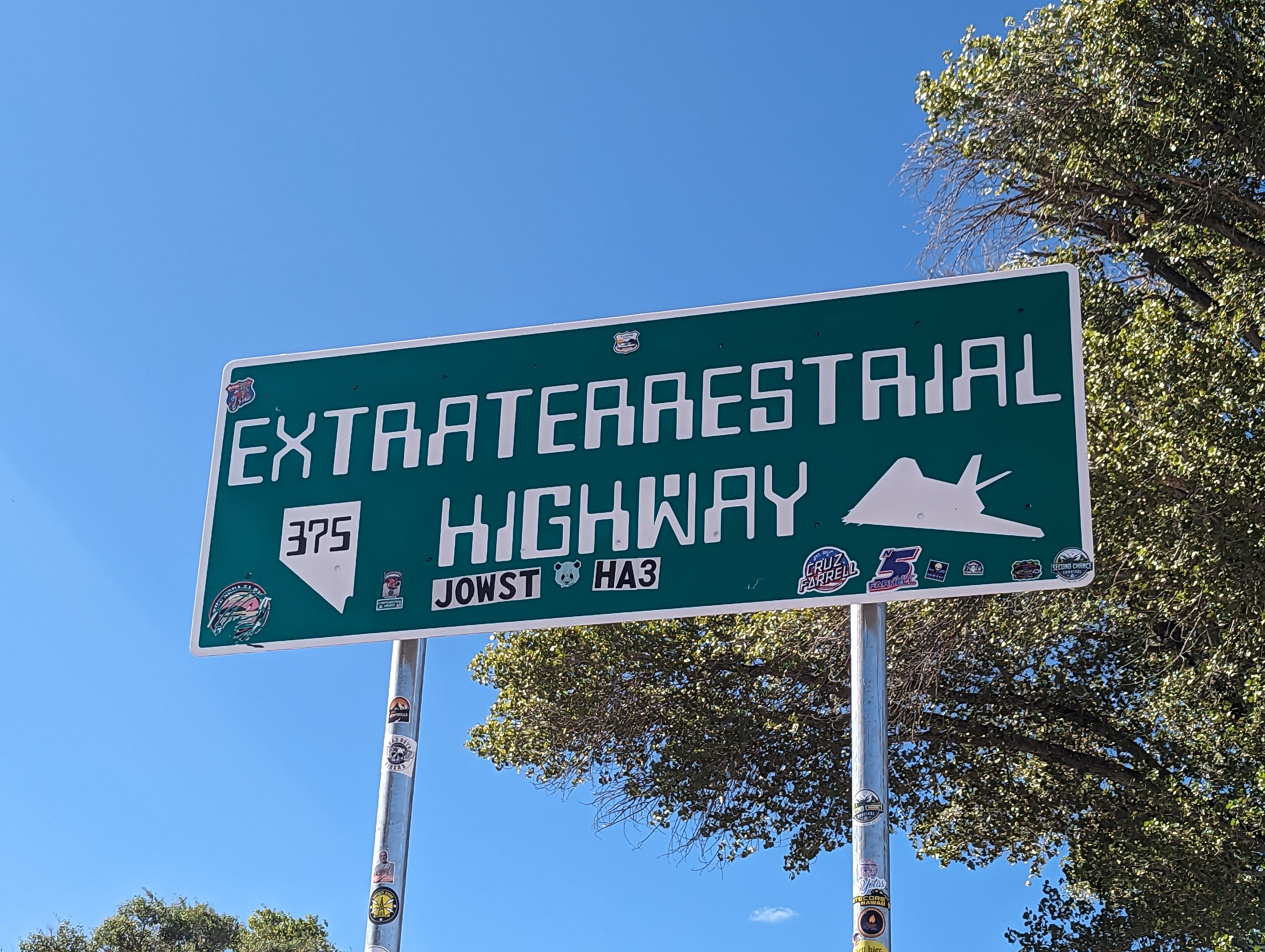
A sign marking one end of Nevada's Extraterrestrial Highway outside of Crystal Springs, Nevada.

A truck towing a flying saucer in the parking lot at the Little A'le'Inn in Rachel, Nevada.

Gray aliens and flying saucers surround the front door of the Little A'Le'Inn in Rachel, Nevada.

Signed dollar bills hang above the bar at the Little A'le'Inn in Rachel, Nevada.

A signed photograph of revered UFO researcher and nuclear physicist Stanton T. Friedman on the wall at the Little A'Le'Inn in Rachel, Nevada.
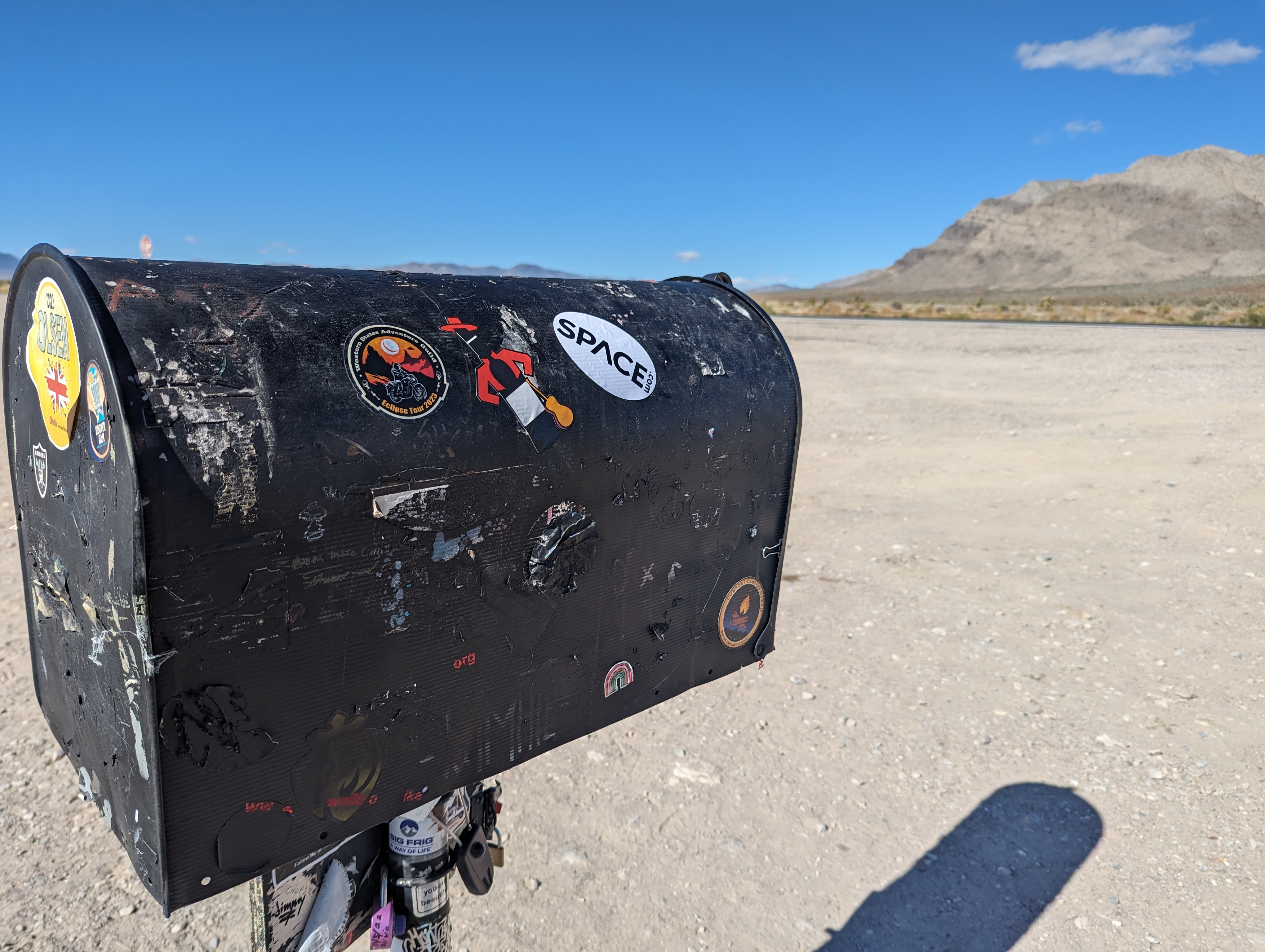
The "Black Mailbox," found along the Extraterrestrial Highway directly north of the U.S. Air Force's Area 51 military installation, has attracted hopeful skywatchers for years who flock to the remote and nondescript dirt road turnoff in hopes of seeing a UFO.
Despite the region's fascination with UFOs, there was a different aerial phenomenon on everyone's mind this weekend as eastern Nevada was crossed by the path of an annular solar eclipse that saw the moon partially block the sun, leaving a striking "ring of fire" overhead.
Breaking space news, the latest updates on rocket launches, skywatching events and more!
The entire region was abuzz with excitement over the event. Eclipse-chasers from all over the world packed into hotels and recreational areas, and local businesses were stocked with eclipse-themed merchandise. The town of Ely, Nevada, some four hours north of Las Vegas, held a "Ring of Fire Eclipse Festival" that featured three days of events including a golf tournament, alien-themed parties and live music.
Just south of Ely along U.S. Highway 50, called the "loneliest road in America" due to its long, desolate stretches of nothing but open desert, lies Great Basin National Park, a 77,180-acre (312-square-kilometer) expanse between the Sierra Nevada and the Wasatch Mountains. The park is home to Lehman Caves, the longest cave system in the state of Nevada, the 13,063-foot-tall (3,982 m) Wheeler Peak, and miles and miles of hiking trails that snake among ancient Bristlecone pines and protected wildlife habitats.

Great Basin National Park in Baker, Nevada.
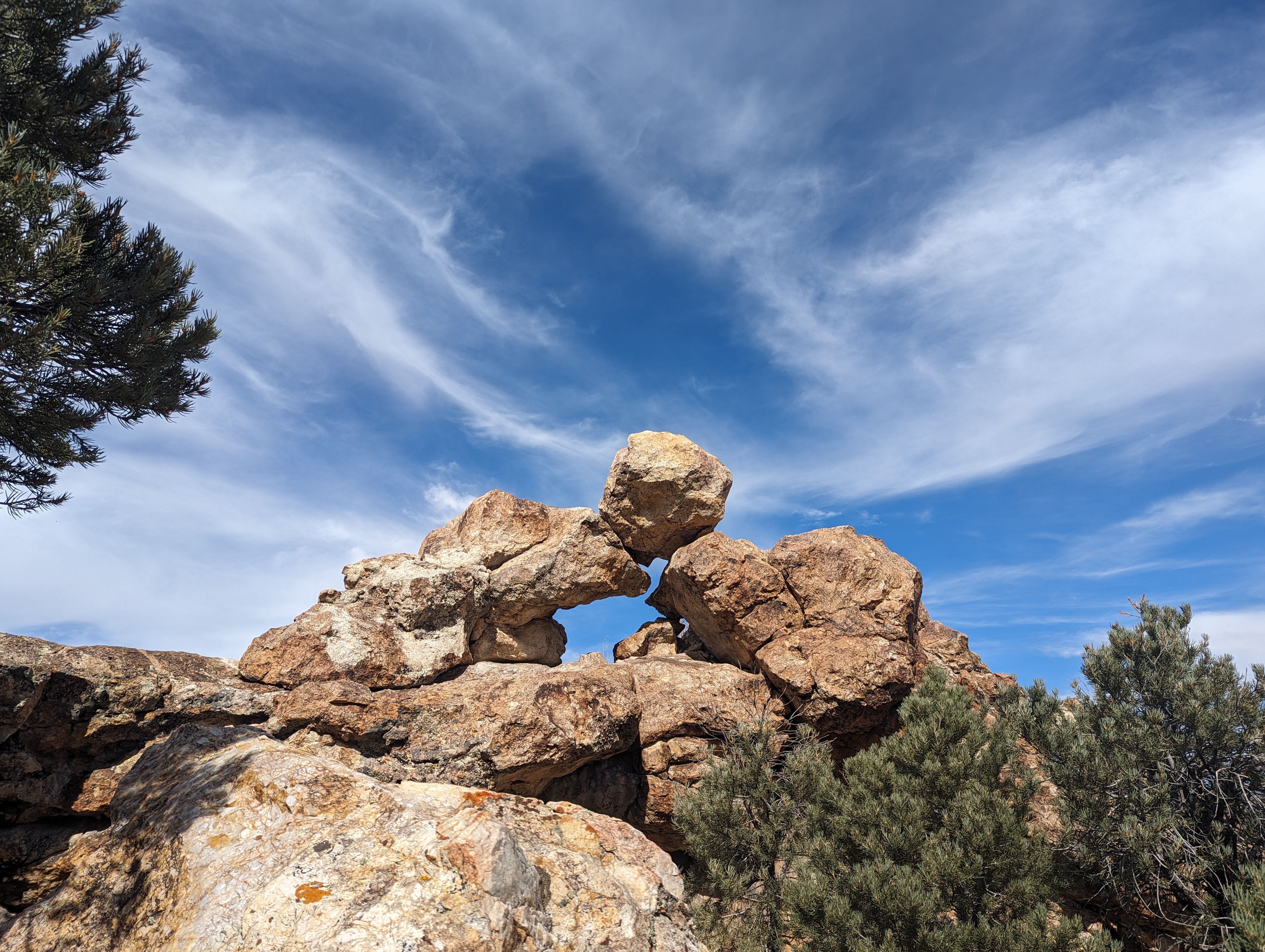
A rock formation at Sacramento Pass, just outside Great Basin National Park in Baker, Nevada.

Stalactites line the ceiling of Lehman Caves inside Great Basin National Park.

Bristlecone and Pinion pines line a trail at Great Basin National Park in Baker, Nevada.
The park hosted two astronomy lectures in an outdoor amphitheater the night before the eclipse, followed by a skywatching party and guided telescope viewing. The park is recognized by the International Dark Sky Association as an International Dark Sky Park, and the skies above it lived up to that distinction on a crystal clear Friday night (Oct. 13) just hours before the eclipse began.
Related: 21 amazing dark sky reserves around the world
The first lecture was given by David Cheney, a mission executive in NASA's Heliophysics Division for the agency's upcoming PUNCH mission (Polarimeter to UNify the Corona and Heliosphere). PUNCH will provide a global 3D image of the solar wind emanating from the sun. Cheney, who grew up in nearby Ely, Nevada, gave a lecture about the science of solar eclipses, including descriptions of the Earth-moon system and its relationship with the sun. "I actually got to go visit my old schools in Ely yesterday, and share some of this with them. And that was really cool," Cheney told Space.com. "That was a highlight for me."
The second lecture of the night was given by Jason Wurtz, a U.S. National Park Service interpretive ranger. Wurtz's lecture, "Prometheus in the dark: A history of eclipses in Great Basin National Park," walked visitors through thousands of years in the history of Prometheus, a Bristlecone pine that once lived in the park that is believed to have been over 4,000 years old before it was cut down in 1964. The tree saw 24 solar eclipses in its life: 10 total eclipses and 14 annular solar eclipses. The most recent annular eclipses were in 2012 and 1596.
"I think the biggest thing that I hope that people take away from this eclipse is really a reminder of our place in the universe. We don't get reminded often enough that we are just one planet in this giant cosmos," Wurtz told Space.com. "To see everything line up where you can see from the surface of the Earth to the moon out there, and then the sun much further out. I think that's a really humbling reminder of our place here."

A sign identifying Great Basin National Park as an International Dark Sky Park by the International Dark Sky Association.
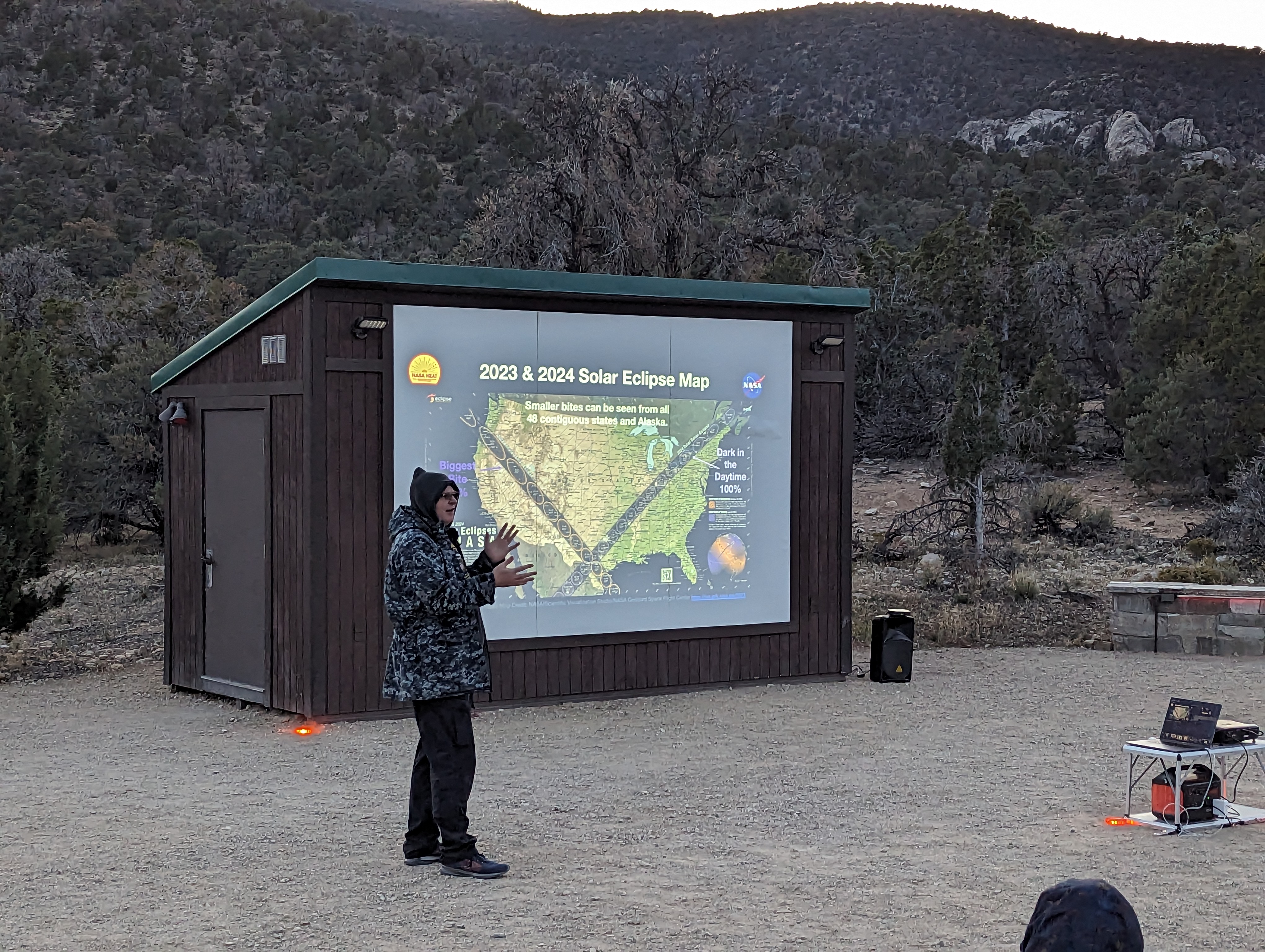
NASA mission executive David Cheney gives a lecture at the astronomy amphitheater at the Lehman Caves Visitor Center in Great Basin National Park on Oct. 13, 2023.

NASA mission executive David Cheney gives a lecture at the astronomy amphitheater at the Lehman Caves Visitor Center in Great Basin National Park on Oct. 13, 2023.

Brett used a Unistellar eQuinox 2 telescope to observe the 2023 annular solar eclipse. Read our review here.
After the lectures, the sky quickly darkened and Great Basin became bathed in the glow of the Milky Way, visible from horizon to horizon. Volunteers set up telescopes and live astrophotography demonstrations for park visitors who braved the frigid temperatures in order to wonder at popular targets like the Andromeda Galaxy or Saturn, bright and clear as it hung among scores of stars under some of America's darkest skies.
It was still cold when those skies began to lighten on the morning of the eclipse in Ely, Nevada, while wispy clouds blew above the recreational vehicles and camp chairs that began to line the route from Ely to Great Basin National Park. As the sun rose over the pine-covered mountains of the Schell Creek Range in the distance, more and more visitors arrived and set up tripods and cameras. Some of the gathered eclipse-chasers wore homemade T-shirts commemorating the event, and many had driven for days just to get a glimpse of the "ring of fire."
The sun first peeked over the mountains a little over an hour before the eclipse. By the time it rose high in a fiery red-and-orange sky, cloud cover was beginning to intermittently obscure the sun. Just as the moon began to darken the top edge of the sun's disk, the clouds grew thicker and blocked it from view, eliciting disappointed groans from the gathered skywatchers.

The sun rises over the mountains of the Schell Creek Range just before the beginning of an annular solar eclipse on Oct. 14, 2023 outside Great Basin National Park in Baker, Nevada.

A Unistellar eQuinox 2 smart telescope with Smart Solar Filter used to photograph the eclipse for Space.com's live coverage of the annular solar eclipse on Oct. 14, 2023 outside Great Basin National Park.
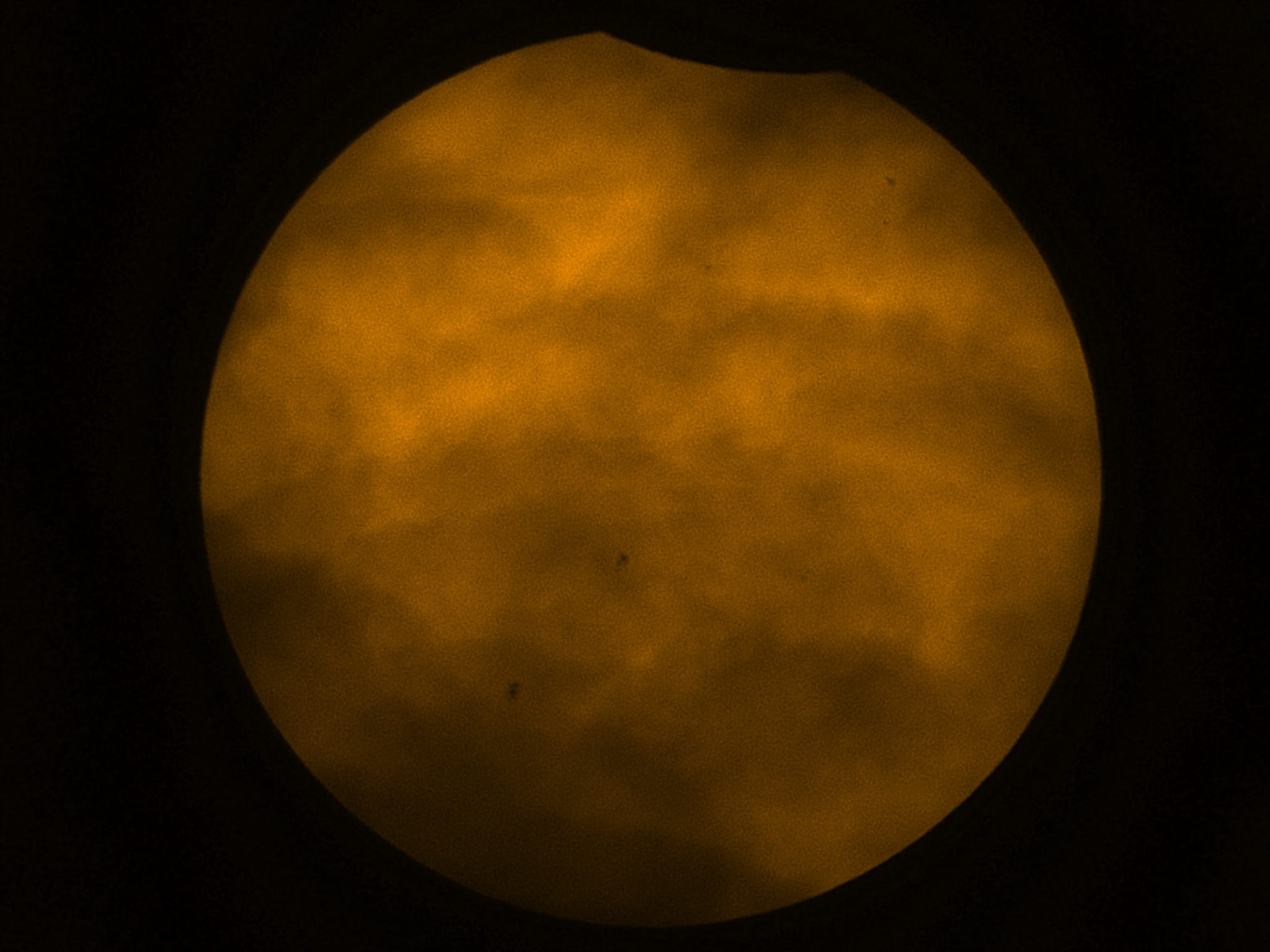
The moon begins to cross the sun's disk behind thin cloud cover during the beginning of an annular solar eclipse on Oct. 14, 2023 as seen from outside Great Basin National Park in Baker, Nevada.

Clouds cover the sun during the beginning stages of an annular solar eclipse on Oct. 14, 2023 as seen from outside Great Basin National Park in Baker, Nevada.
After roughly 10 minutes, the clouds cleared, and the eclipse began to enter annularity, its "ring of fire" phase, as the crowds sighed relief. The temperature dropped significantly as the moon moved slowly across the center of the sun's disk, and the mid-morning light took on a muted, twilight-like glow. When the moment of annularity occurred, applause rang out from the crowds of awed onlookers.

Sunspots can be seen on the sun in the partial eclipse stage of an annular solar eclipse on Oct. 14, 2023 as seen from outside Great Basin National Park in Baker, Nevada.
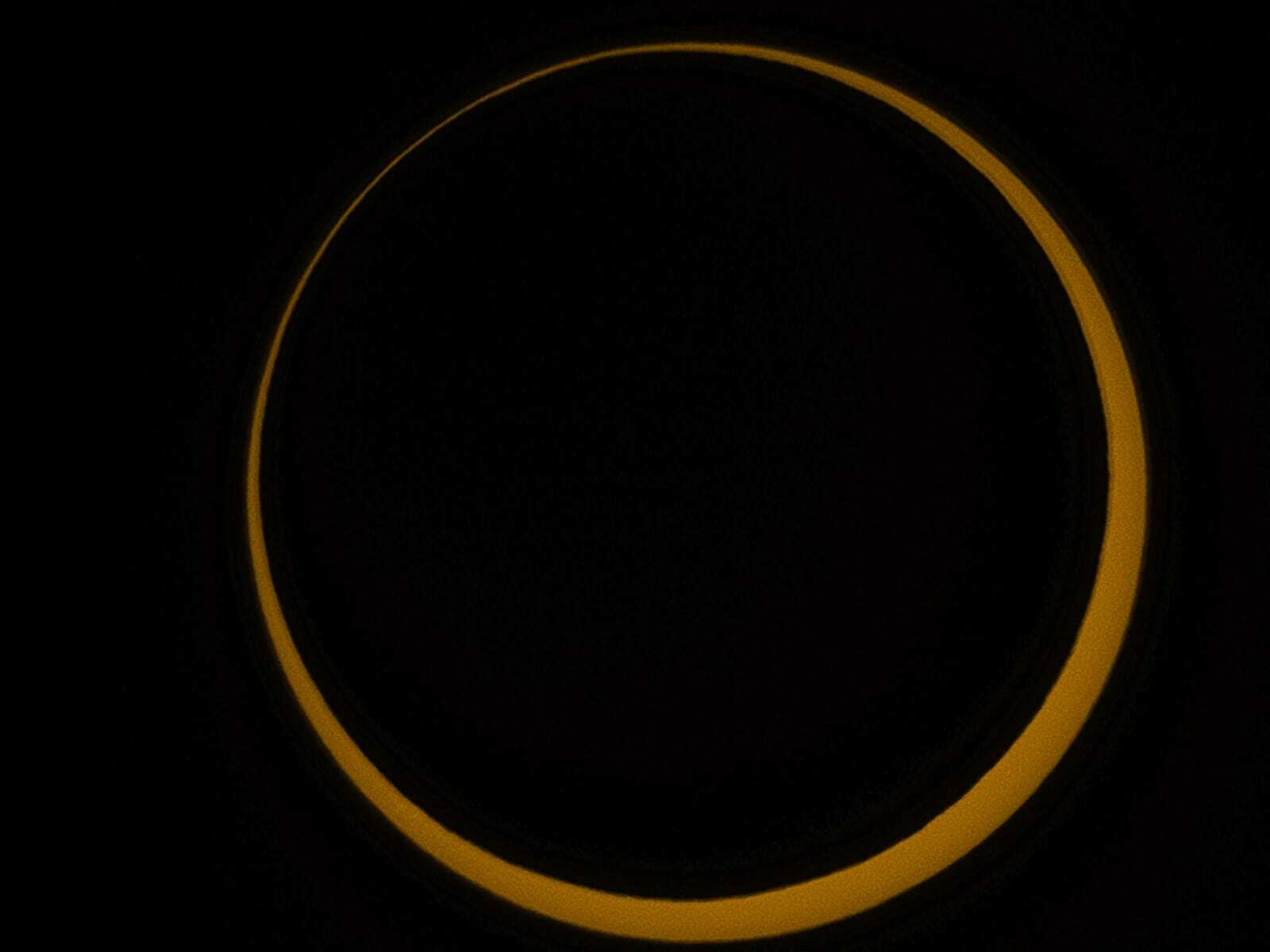
The moon blocks the sun, leaving a "ring of fire" annular eclipse as seen from outside Great Basin National Park in Baker, Nevada.

The moon leaves the sun's disk at the end of the annular solar eclipse on Oct. 14, 2023 as seen from outside Great Basin National Park in Baker, Nevada.
Within minutes, it was over. As soon as the eclipse's annularity phase ended and it resumed being a partial eclipse, the crowds began to thin as visitors packed their chairs and paper solar glasses and left. The temperature rose rapidly as the moon exited past the sun's bottom-left edge, and suddenly the skies were normal once again.
After the eclipse, Ely held a "Punkin Chunkin'" festival complete with costumed guests and vendors celebrating the newly-finished celestial spectacle with a live medieval combat demonstration, food trucks and pumpkin-launching catapults. Vendors sold eclipse-themed T-shirts featured cartoonish flying saucers zooming beside the eclipsed sun and commemorative drink koozies depicting the "ring of fire" above the Bristlecone pines that dot the surrounding desert.
No matter how much has changed since one of those Bristlecones, Prometheus, first peeked out of the ground thousands of years ago to experience its first eclipse alongside the area's Indigenous inhabitants, one thing stays the same: Whether it's flying saucers or solar eclipses, the sky and its celestial phenomena continue to captivate the people that call the American southwest home.
If you captured a photo of the annular eclipse and would like to share it with Space.com's readers, send your photo(s), comments, and your name and location to spacephotos@space.com.
Travel arranged by Travel Nevada. Solar photography made possible by Unistellar.

Brett is curious about emerging aerospace technologies, alternative launch concepts, military space developments and uncrewed aircraft systems. Brett's work has appeared on Scientific American, The War Zone, Popular Science, the History Channel, Science Discovery and more. Brett has degrees from Clemson University and the University of North Carolina at Charlotte. In his free time, Brett enjoys skywatching throughout the dark skies of the Appalachian mountains.
